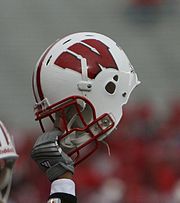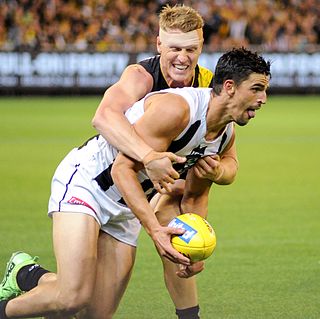
Most forms of football have a move known as a tackle. The primary purposes of tackling are to dispossess an opponent of the ball, to stop the player from gaining ground towards goal or to stop them from carrying out what they intend.

Personal protective equipment (PPE) is protective clothing, helmets, goggles, or other garments or equipment designed to protect the wearer's body from injury or infection. The hazards addressed by protective equipment include physical, electrical, heat, chemical, biohazards, and airborne particulate matter. Protective equipment may be worn for job-related occupational safety and health purposes, as well as for sports and other recreational activities. Protective clothing is applied to traditional categories of clothing, and protective gear applies to items such as pads, guards, shields, or masks, and others. PPE suits can be similar in appearance to a cleanroom suit.
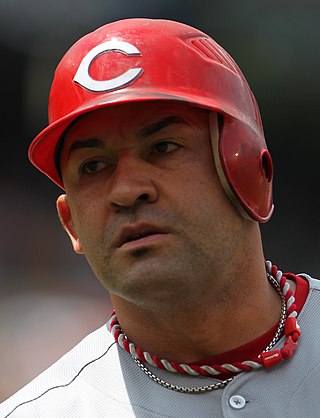
A batting helmet is worn by batters in the game of baseball or softball. It is meant to protect the batter's head from errant pitches thrown by the pitcher. A batter who is "hit by pitch," due to an inadvertent wild pitch or by intent, may be seriously, even fatally, injured.

A goaltender mask, commonly referred to as a goalie mask, is a mask worn by goaltenders in a variety of sports to protect the head and face from injury from the ball or puck, as they constantly face incoming shots on goal. Some sports requiring their use include ice hockey, lacrosse, inline hockey, field hockey, rink hockey, ringette, bandy, rinkball, broomball, and floorball. This article deals chiefly with the goal masks used in ice hockey.

An oxygen mask is a mask that provides a method to transfer breathing oxygen gas from a storage tank to the lungs. Oxygen masks may cover only the nose and mouth or the entire face. They may be made of plastic, silicone, or rubber. In certain circumstances, oxygen may be delivered via a nasal cannula instead of a mask.

Orthodontic headgear is a type of orthodontic appliance typically attached to the patient's head with a strap or number of straps around the patient's head or neck. From this, a force is transferred to the mouth/jaw(s) of the subject.
A football helmet is a type of protective headgear used mainly in gridiron football, although a structural variation has occasional use in Australian rules football. It consists of a hard plastic shell with thick padding on the inside, a face mask made of one or more plastic-coated metal bars, and a chinstrap. Each position has a different type of face mask to balance protection and visibility, and some players add polycarbonate visors to their helmets, which are used to protect their eyes from glare and impacts. Helmets are a requirement at all levels of organized football, except for non-tackle variations such as flag football. Although they are protective, players can and do still suffer head injuries such as concussions.

In ice hockey, the goaltender wears specialized goaltending equipment to protect themselves from the impact of the puck, and to assist in making saves. Ringette and rinkball goaltenders use the same equipment with some exceptions. This article deals chiefly with the sport of ice hockey.

For centuries, firefighters have worn helmets to protect them from heat, cinders and falling objects. Although the shape of most fire helmets has changed little over the years, their composition has evolved from traditional leather to metals, to composite helmets constructed of lightweight polymers and other plastics.

In ice hockey, players use specialized equipment both to facilitate the play of the game and for protection as this is a sport where injuries are common, therefore, all players are encouraged to protect their bodies from bruises and severe fractures.
The New York Giants of the National Football League have had numerous uniforms and logos since their founding in 1925.

Clarence Fred Gehrke was an American football player and executive. He played in the National Football League (NFL) for the Cleveland / Los Angeles Rams, San Francisco 49ers and Chicago Cardinals from 1940 through 1950. To boost team morale, Gehrke designed and painted the Los Angeles Rams logo in 1948, which was the first painted on the helmets of an NFL team. He later served as the general manager of the Denver Broncos from 1977 through 1981. He is the great-grandfather of Milwaukee Brewers left fielder and 2018 NL MVP Christian Yelich.
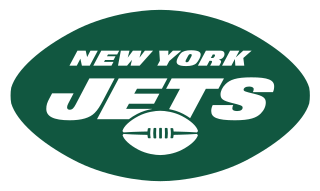
The National Football League (NFL)'s New York Jets began play in 1960 as the Titans of New York, a charter member of the American Football League (AFL). When the Titans became the Jets in 1963 the team colors changed from navy blue and gold to green and white, which they have remained ever since, although the franchise has used different shades of green and has at times used black as a third/trim color. For most of their history, the Jets had white helmets with green striping and logos, green and white jerseys with opposite-colored sleeves and shoulder stripes, and white pants with two green stripes down each side. The team switched to green helmets and a simpler design in 1978, replacing the football-shaped logo with a modernized wordmark, then in 1990 added black trim and green pants. In 1998 the team reverted to its "classic" look, with an updated version of the prior logo, and replaced the traditional kelly green with a darker hunter green.

An eyeshield is a piece of football equipment that is also referred to as a visor that was created in the 1980s. In the mid 1990s as an effort to prevent brain and head injuries, headgear became mandatory in the game of football. The eyeshield was created to protect the eyes of football players during games and practices. It is a curved piece of plastic that attaches to the front of a football helmet. Safety equipment such as the facemask, eyeshields, and other face shields have been adopted over time to prevent player injury. The eyeshield leaves the mouth exposed, but covers the eyes and nose. The piece of equipment is made from various materials and by many different brands. Only clear eyeshields are permitted for use in high school football games because eyes are needed to be seen while checking for a concussion. For college level players, the eyeshield may be tinted for players with eye problems.
Professionals and amateurs alike wear protective headgear (helmets) to reduce the chance of injury while playing American and Canadian football. The football helmet has changed over time and many different materials have become available. The rules of the game have changed as well.
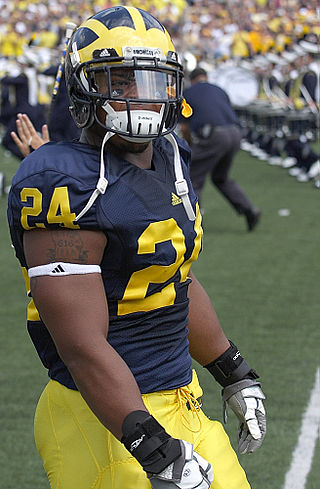
Protective equipment in gridiron football consists of equipment worn by football players for the protection of the body during the course of a football game. Basic equipment worn by most football players include helmet, shoulder pads, gloves, shoes, and thigh and knee pads, a mouthguard, and a jockstrap or compression shorts with or without a protective cup. Neck rolls, elbow pads, hip pads, tailbone pads, rib pads, and other equipment may be worn in addition to the aforementioned basics. Football protective equipment is made of synthetic materials: foam rubbers, elastics, and durable, shock-resistant, molded plastic. Football protective equipment has remained consistent in use for decades with some slight modifications made over the years in design and materials. The assignment and maintenance of football gear belongs to the team equipment manager.
The Pittsburgh Steelers of the National Football League were founded in 1933. Over the course of the team's history, the team has had several logos while wearing virtually the same uniforms over the years, with subtle changes made to give the uniforms an updated look. The team colors, uniforms, and logo are often ranked as being among the best in the NFL.
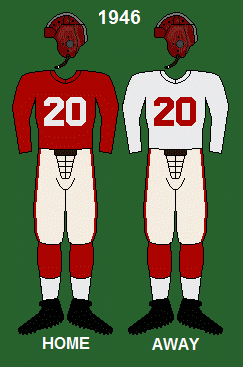
The logo and uniforms of the San Francisco 49ers have evolved since their inception in 1946.
This is a gallery of the history of all the revisions made to the uniform jerseys and helmets of the National Football League's Cleveland Browns franchise.
